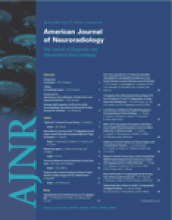Abstract
BACKGROUND AND PURPOSE: Current organ-preservation regimens for upper aerodigestive tract squamous cell carcinoma (SCCA) require endoscopic procedures under general anesthesia to evaluate the tumor response. The purpose of our study was to determine whether CT perfusion (CTP) parameters correlate with response to induction chemotherapy as assessed by endoscopy under general anesthesia.
METHODS: Nine patients with advanced (stage 3 or 4) SCCA of the oropharynx were enrolled in a nested phase 2 prospective trial in which induction chemotherapy was used to assess the tumor response. Patients underwent direct laryngoscopy and CTP before and 3 weeks after one cycle of induction chemotherapy. The outcome variables were the surgeon’s estimate of tumor volume during endoscopy with biopsy under anesthesia and CTP parameters (capillary permeability (CP), blood volume (BV), blood flow (BF), and mean transit time (MTT)). Wilcoxon rank sum analysis was used to correlate the baseline values of BF and BV with response to induction chemotherapy. Comparison of agreement between the reduction in tumor volume and change in CTP parameters was performed by using kappa estimates.
RESULTS: Seven of 9 patients demonstrated ≥50% tumor volume reduction, representing positive response to induction chemotherapy. In the responder group, the following changes in mean pre- and postinduction chemotherapy values were noted: mean BF, 114.2 mL/100 g /min (preinduction) to 45.1 mL/100 g/min (postinduction); mean BV, 5.11 mL/100 g to 3.1 mL/100 g; mean CP, 25.6 mL/100 g /min (preinduction) to 18.3 mL/100 g / min (postinduction); mean MTT, 4.9 seconds (preinduction) to 8.0 seconds (postinduction). In the nonresponder group, the following changes were noted: mean BF, 56.9 mL/100 g/min to 75.9 mL/100 g/min; mean, BV 2.7 mL/100 g to 4.71 mL/100 g; mean CP, 24.1 mL/100 g/min to 23.7 mL/100 g/min; mean MTT, 4.3 seconds to 5.34 seconds. Higher baseline (pretherapy) values of BV showed significant correlation with endoscopic tumor response (P < .05). Reduction in the BV (by ≥20%) on follow-up studies also showed substantial agreement with clinical response as assessed with endoscopy (kappa = 0.73). The agreement between decreased BF, decreased CP, and increased MTT and clinical response was fair (kappa = 0.37).
CONCLUSION: These preliminary results show that deconvolution-based CTP technique offers potential for noninvasive monitoring of response to induction chemotherapy in patients with oropharyngeal cancers. Percentage reduction of BV is significantly correlated to endoscopic response to induction chemotherapy, though we acknowledge that the data correspond to short-term outcomes and long-term durability of response cannot be established. Nevertheless, validation of the use of deconvolution CTP parameters as predictors of tumor response may permit replacement of an invasive diagnostic procedure conducted under anesthesia currently used to assess response with noninvasive perfusion CT imaging.
- Copyright © American Society of Neuroradiology












